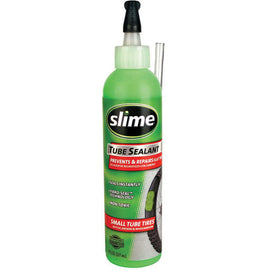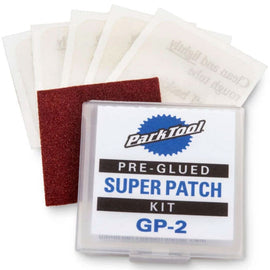
Can I use any bike valve I want?
People have often asked does it matter which valve they use. It's not uncommon for people to try and put a Presta valve in a Schrader valve hole. However, in theory yes you can. But in practice, no, it's not advisable.
If you got caught short and needed to do it in an emergency, then logically a small diameter presta valve will physically fit into a Schrader valve rim hole. But, how long it will last is another thing!

Rim Hole Size
A Schrader rim hole is 8mm and a Presta rim hole is 6mm. What difference can a couple of millimetres make to a valve working? Well, because the rim is made usually of an alloy or metal, it can be very sharp and rigid. Sharp rigid metal vs. delicate rubber, you can figure out who is going to win.

Valve Tear Off
This is the big reason why you must use the correct valve in the correct valve hole. Valve tear off happens for three key reasons:

1. Using a presta valve in a Schrader valve hole
Put simply, the thin valve wants to come out of the larger hole. As more pressure is added the valve will rise up through the rim hole a little. This is where sharp metal can be. As you ride the rim can start to damage and cut the valve where it attaches to the inner tube. Obviously resulting in a failure of the inner tube.
2. Low tyre pressure
Low type pressure can result in valves tearing off also. It's because of a thing called type slip. Tyre slips is mainly caused by heavy braking. What happens is when you brake, the tyre wants to keep going! So it can cause movement and the inner tube plays piggy in the middle of the pair. This friction can push and pull on the valve, eventually leading to the valve tearing off unexpectedly. This is somewhat more common with MTB's because they tend to run lower pressures. To solve this, many use Downhill / Freeride tubes that have heavily re-enforced valve foot to the main inner tube.
3. Incorrect installation
Installing even the correct valve in your wheel rim can cause damage to the valve seat if you're not careful. As you inflate you inner tube, movement doing this can cause the valve to move in the rim hole, which can in some cases lead to the rim cutting the valve foot or in extreme cases tearing it completely off. So it's worth knowing how to avoid this.
What are the best solutions to these problems I hear you ask? Well, now you know what causes the issues, here are the best solutions to valves tearing, ripping off and valve foots being cut.

1. Rim Nuts
This is where a rim nut comes into play. You see most people think the rim nut is just to keep a valve in place. Yes to some degree. They certainly help when it comes to attaching a bike pump to the valve. But also, the rim nut is there to prevent the valve moving around while you inflate the tube. Simply keep them hand tight and don't be rough while attaching or inflating your tubes. Easy.
2. Correct Tyre Pressure
It's a very simple thing to do but how many times have you seen a bike go past where the rim is practically bouncing off the floor! Simply check your tyre pressures and keep things where they need to be. Also, if you need a Downhill / Heavy Duty / Free Ride inner tube, stick to it! Use the correct tube for how and what you are riding.
3. Don't mismatch valve types
Quite simply, don't change your valve type. Some people try it because they have ordered the wrong valve type, others go as far as to drill their rims out to make the rim hole bigger. (Yes, this is possible, but you're messing with the integrity of the rim, so please, please don't!).
Final thoughts.
Make sure you don't make these mistakes and if you want more information on valve types and what you need, check out our Inner Tube Valve Types guide.





